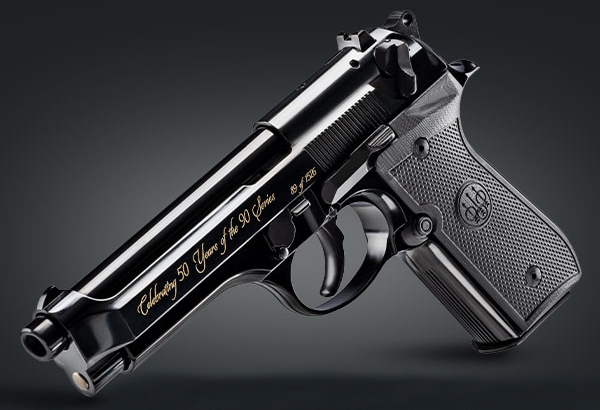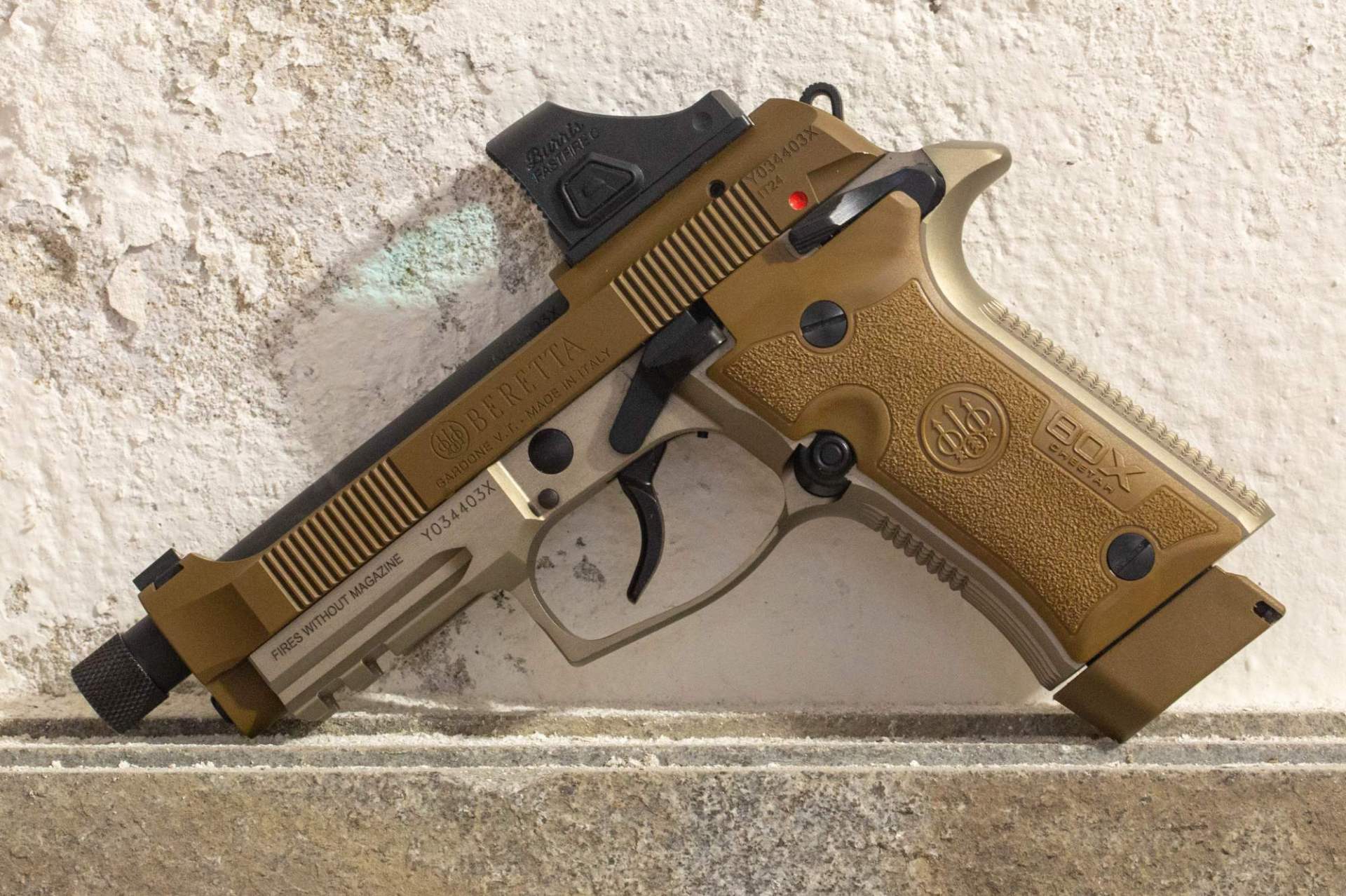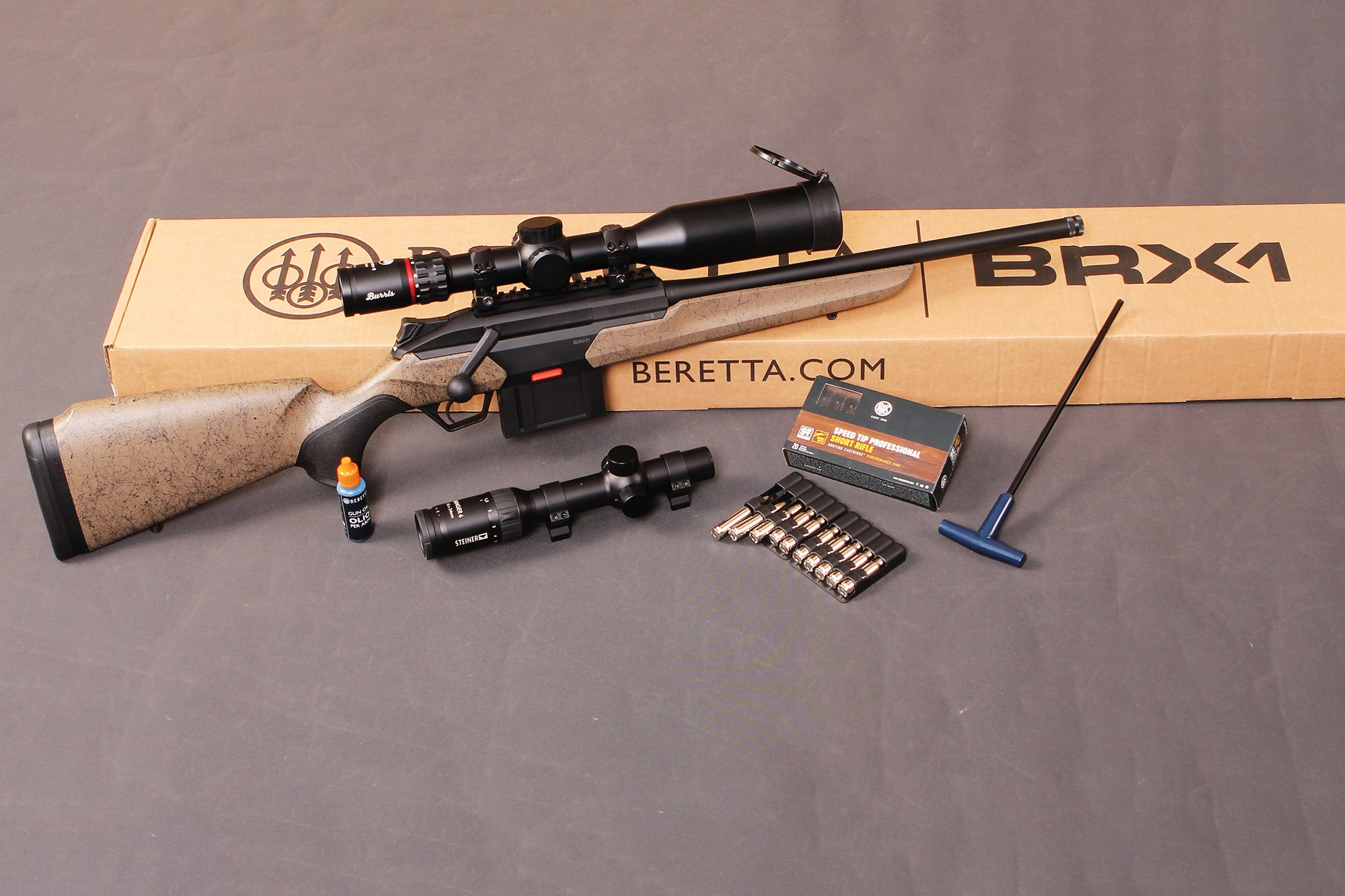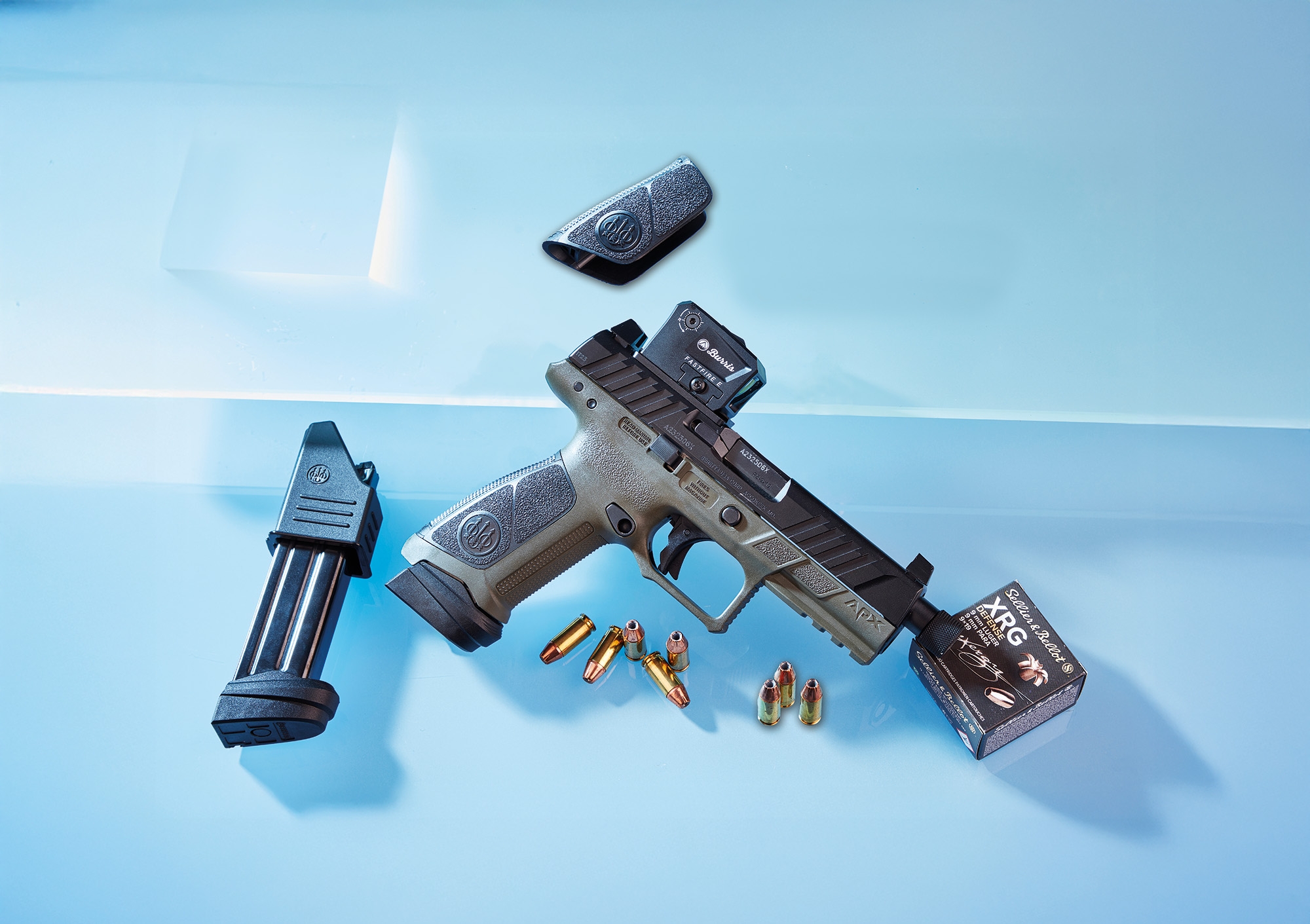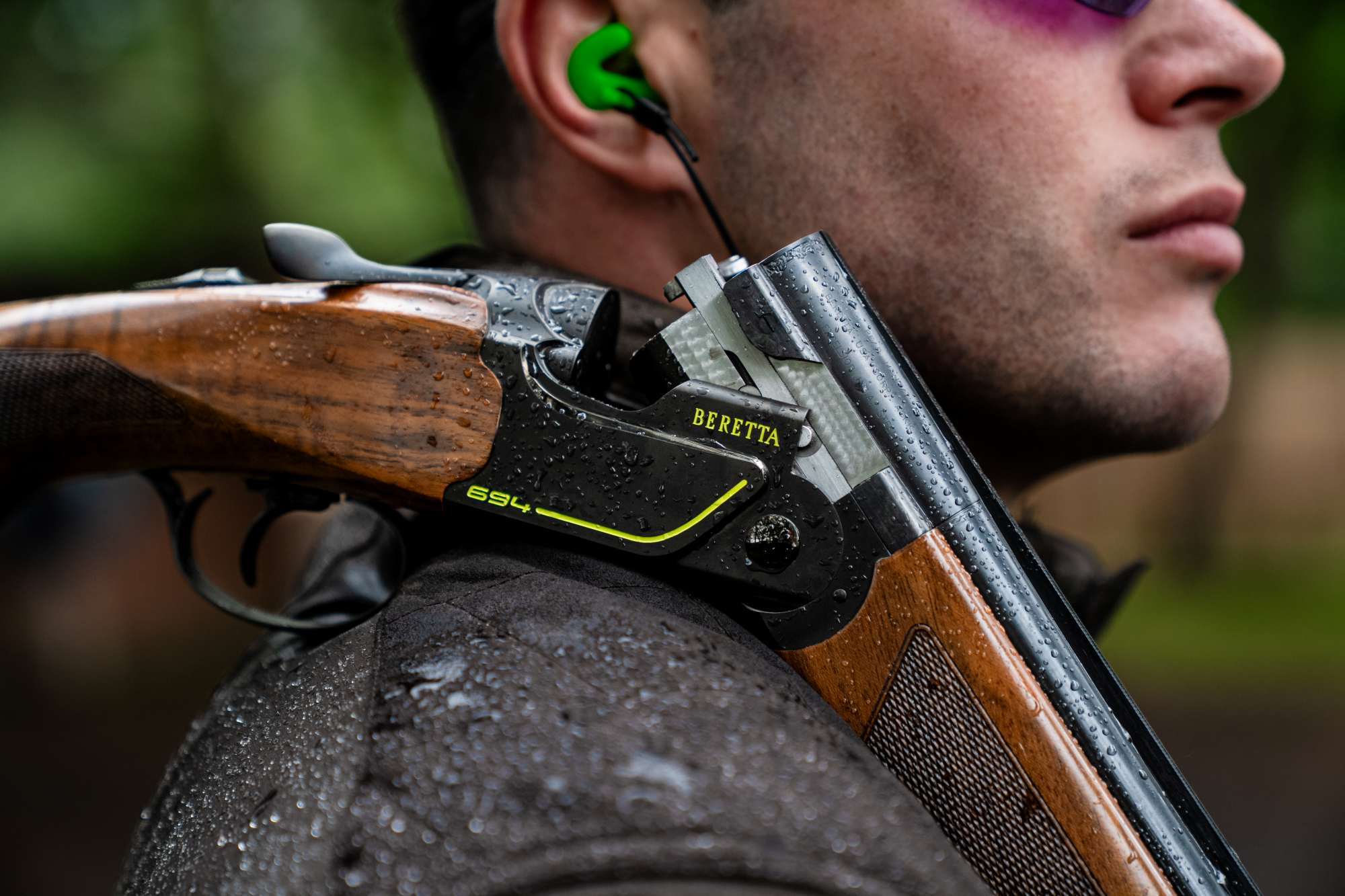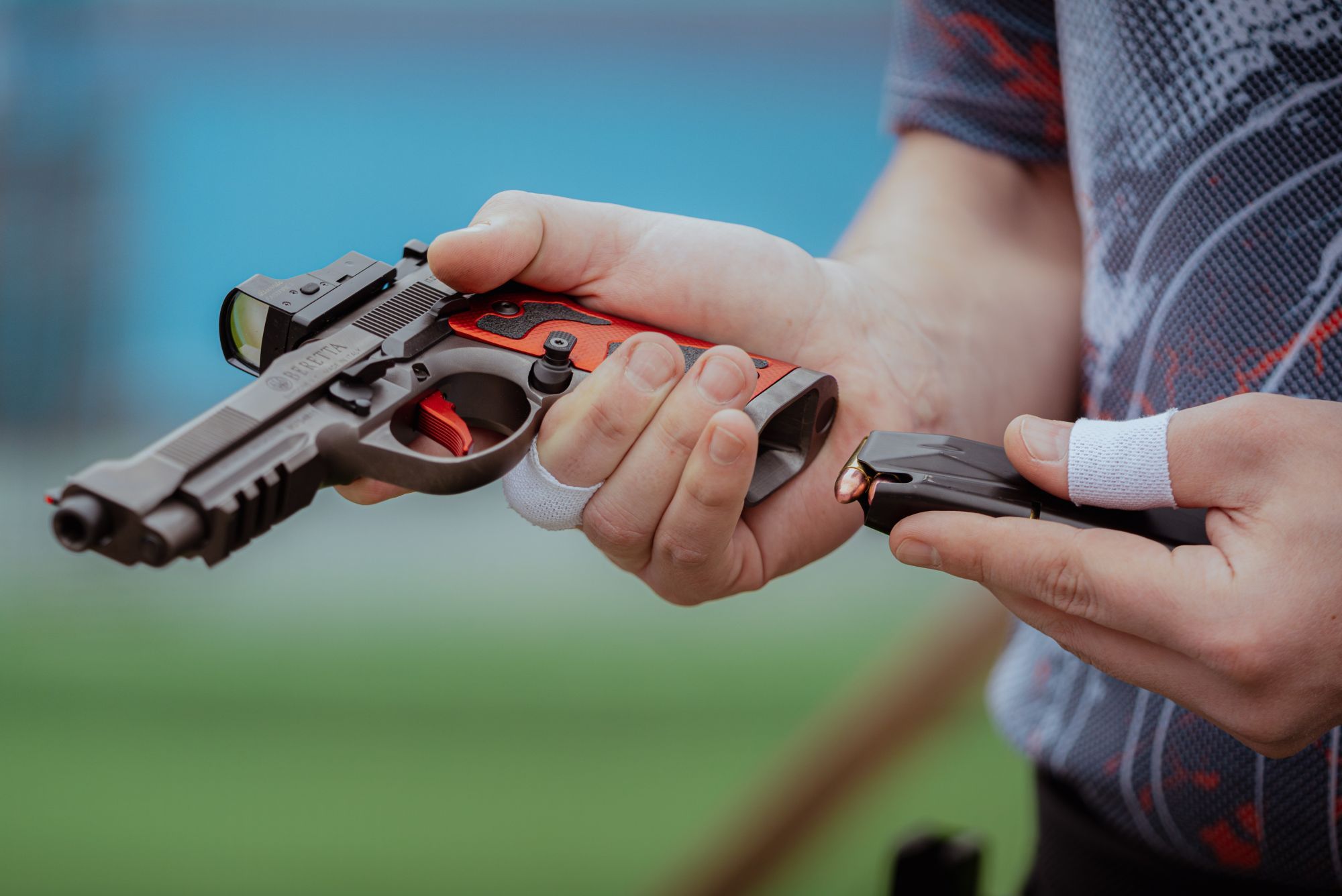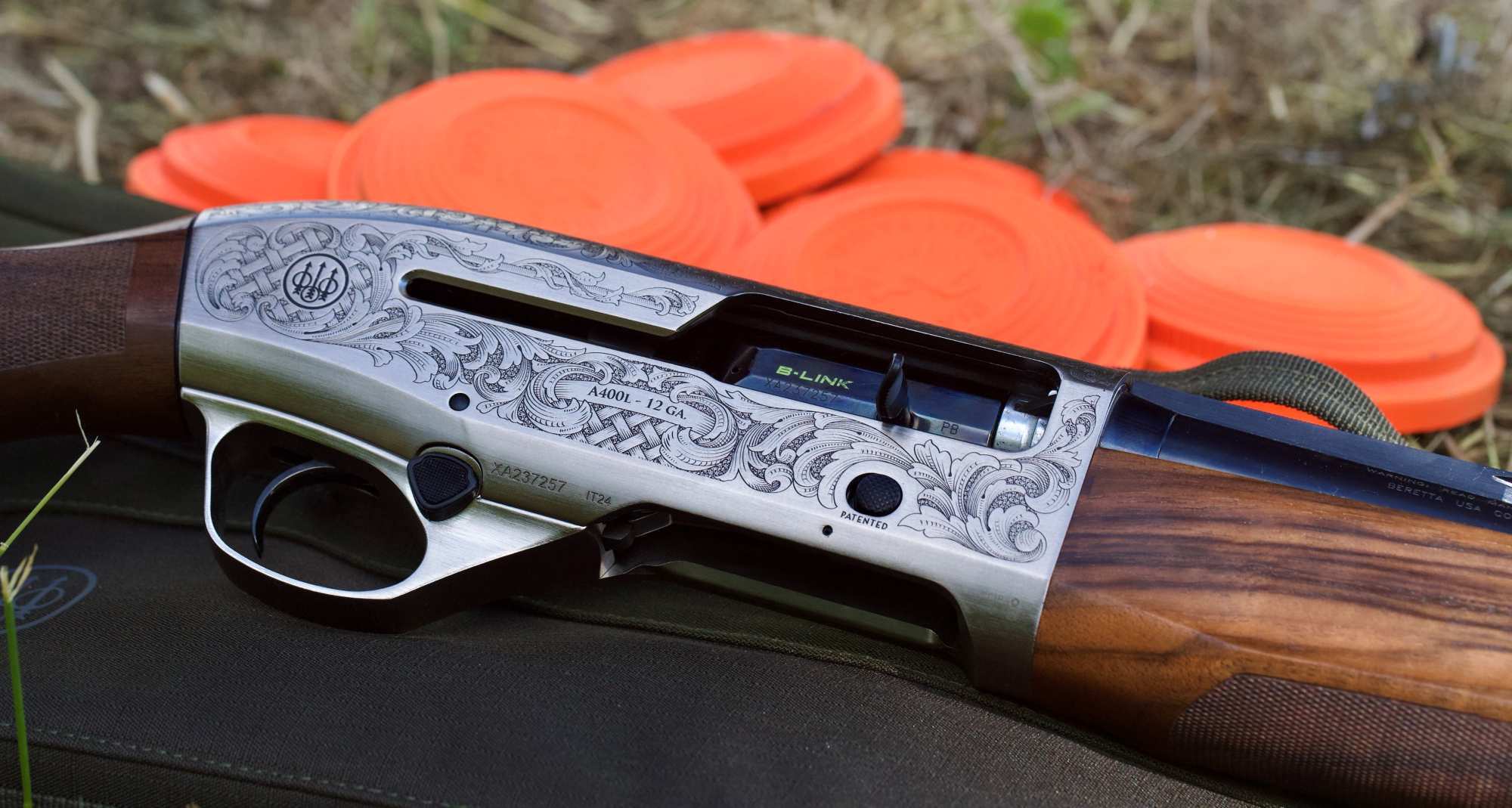Every hunter knows Beretta. The Italian gun manufacturer with almost 500 years of tradition in gunmaking (it was founded in 1526) makes hunting and sporting shotguns, pistols of all kinds, automatic weapons for government agencies and also a straight-pull hunting rifle, the BRX1. The BRX1 is currently available in .308 Winchester, as in the case of the test gun, as well as in .30-06 Springfield and 6.5 Creedmoor. The only magnum caliber currently available is .300 Winchester Magnum, with further calibers in preparation. After the gun was introduced a good four years ago and since then several new synthetic stock variants, one of them even with a carbon fiber-wrapped barrel, have been advertised, we were allowed to put the BRX1 through its paces with the two-piece wooden stock available as the "BRX1 Wood" accessory set. But first, a quick look at the BRX1 itself: at first glance, the design of the bolt and the cocking mechanism is somewhat similar to that of a competitor from Isny, but at second glance, the cocking mechanism turns out to be a safety and the bolt also locks in a different way. But let's start from the beginning.
The straight-pull action of the Beretta BRX1 rifle
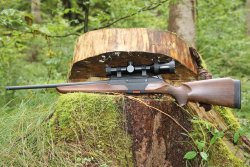
The centerpiece in the truest sense of the word is the bolt of the BRX1. The rotating bolt has eight locking lugs in standard calibers and 16 in magnum calibers. The straight-pull action can be operated quickly and intuitively. It is smooth-running. The rather coarse-looking bolt handle fulfils its purpose, as opening and closing the gun requires a little "smack". A filigree handle would certainly be unsuitable for this. To remove the bolt, a catch on the left-hand side must be pressed upwards. Another highlight is that the bolt handle can be moved from right to left in an instant. This also means that the case ejector can be moved to the right side. You want to operate the gun "with the left": remove the bolt, press the pin on the inside on the right-hand side. This releases the bolt handle. Pull it out and insert it again on the left side – done. The bolt head must be removed for the ejection to work on the corresponding side. To do this, act on the guide of the rotating cam lock, remove the bolt head, turn it 180 degrees and reinsert it – done. It couldn't be easier.
Safety, trigger and magazine of the Beretta BRX1
The safety catch is located on the rear bolt and is operated by means of a slide. The operation works in three positions:
1 = trigger and bolt locked
2 = trigger locked and bolt unlocked
3 = ready to fire
In positions 1 and 2, the hammer is mechanically locked and is completely detached from the trigger unit. The safety slide is ergonomically shaped and can be easily operated with the thumb. The direct trigger can be adjusted in three stages from around 950 to 1,500 grams. To do this, the trigger group must be removed. This procedure can be carried out (almost) without tools. Simply remove the bolt, push the small silver-coloured carrier release button upwards and then remove the trigger group by pulling it downwards to the front. There are three catches on the right-hand side of the trigger group. Use the upper one to select the lightest trigger weight, the further down, the heavier. If you feel very carefully, you will notice a minimal scratching in the fore-end. Once you are "in action", this is of course no longer noticeable at all.
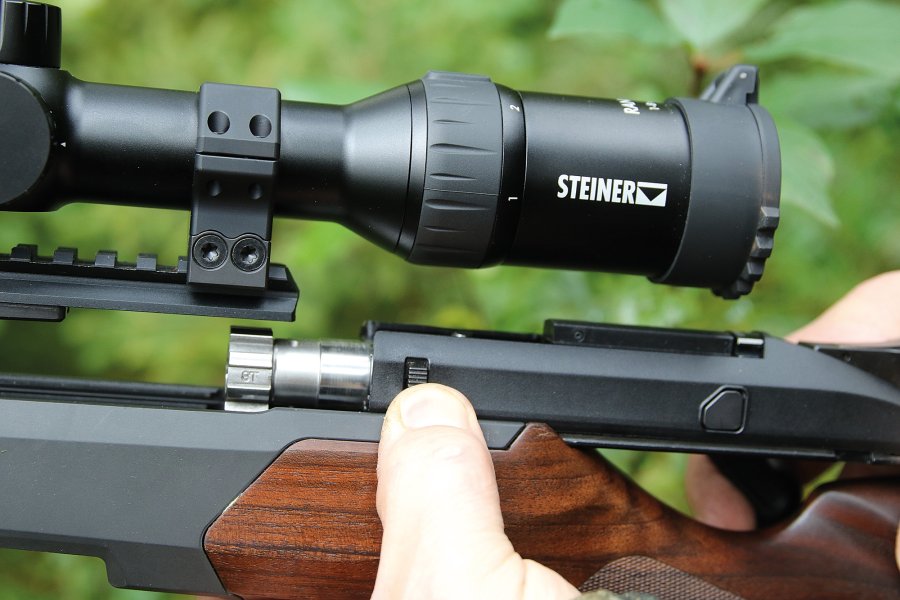
The signal-colored magazine is wonderfully colorful. A small accent on the classic-looking gun that harmonises beautifully with the clothing for which the rifle was designed. The double-stack magazine can be loaded smoothly and can also be inserted into the action from above like a toploader. The feed ramp from the magazine into the chamber is quite steep. This brings us back to the swing: if the bolt is closed quickly, this is not noticeable. However, if you have cartridges with rather blunt bullets and close the gun slowly, you will immediately notice that more force is required. There were no malfunctions with any of the types of ammunition tested. We also like the fact that the insert magazine closes flush and still has a capacity of five cartridges. This loading capacity applies to both standard and magnum calibers. The magazines are currently available in three groups (magnum, medium, short). The labelling can be read on the ridge against which the cartridge base rests. In the hectic pace of a driven hunt, it is possible to accidentally lose a magazine from the gun. With the Beretta, on the other hand, both latches have to be pressed to release the catch. Removing and reinserting the magazine into the magazine well is very easy. No strange movements have to be made.
Barrel and wooden stock of the Beretta BRX1 "Wood"
The diameter of the matte blued barrel is 16 mm at the muzzle, an M14x1 thread is used to mount silencers and is concealed under a knurled thread protection cap. The barrel length is 51 cm, the twist rate 1:11 in .308 Winchester, the weight of the rifle without scope and rings is 3.25 kg (fully assembled with a Steiner Ranger 8 1-8x24 scope including rings it is 3.87 kg). The seemingly free-floating Picatinny rail at the rear takes a little getting used to, as it is firmly connected at the front to the head piece of the receiver, while the rear third is exposed. In addition to the standard Picatinny rail made of Ergal, a Picatinny steel rail, a rail for the Tikka Optilock mount, a short 12 mm rail for reflex sights and a base rail for EAW pivot mounts are also available as accessories.
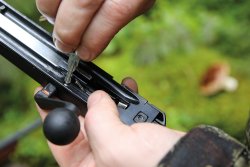
Length of pull (LOP) can be customised by means of interchangeable spacers and the corresponding recoil pad in different thicknesses. The test rifle had a 1.25 mm spacer, the recoil pad itself was 1.75 cm. The spacer can be removed and the pad is available in four different thicknesses. LOP can be adjusted from 34.3 to 39.3 cm. The pistol grip is relatively steep and has a very fine chequering cut into it. The pistol cap is decorated with the Beretta logo - did you know that the logo has only been the official trademark since 1949 and that the arrows and circles originate from the world of naval battles? The pistol grip in the Wood version is very finely checkered. This detail gives the gun a very high-quality appearance. On the other hand, a checkering is only cut into the underside of the fore-end. Whether it is an advantage or disadvantage that this fine chequering is only found on the underside of the fore-end remains to be seen. It is usually only noticeable on closer inspection and when you are "working" with the rifle, such partial aspects are irrelevant. Personally, I like it better when the fore-end has a little more grip on the sides, but that is a personal preference.
The riflescopes used in the test on the Beretta BRX1: Steiner Ranger 6 3-18x56 and Ranger 8 1-8x50
Two different optics were used for the test. The Steiner Ranger 6 3-18x56 for the groupings on the 100-m line and the 1-8x24 of the Steiner Ranger 8 series for the running boar at 50 m. The in-house rings from Beretta were also supplied. On a positive note, two extra screws are included. The Ranger 6 model was further optimised in 2024. The variant with the 3-18x magnification and the 56-mm objective lens is new. The parallax can be adjusted from 50 m to infinity. The length is 338 mm with a weight of 754 g. The optics have a 30-mm main tube and a 4AI reticle in the 2nd focal plane. The click adjustment is 1 cm at 100 m. Cost point: 1,699 euros. This riflescope can also be operated with five different ballistic rings. These cost 149 euros. For the Ranger 8 1-8x50, the inclined customer has to invest 1,899 euros. This is where the saying "less is more" comes into play. For this you also get the 4AI illuminated reticle. The parallax is fixed at 100 metres and the clicks are specified as 1 cm at 100 metres. The length of the scope is 290 millimetres with a 30-mm main tube and a weight of 510 grams. However, as the series numbering reveals, the Ranger 8 is a riflescope with an eightfold zoom.
How did the Beretta BRX1 Wood perform?
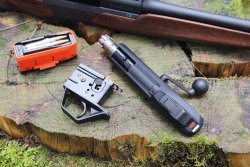
The safety catch worked very well in everyday use. The slider can be operated with a certain amount of force, but is by no means stiff. The bolt is a bit tricky to open and close, and it relies on the force with which it is operated. It is not for the faint-hearted. It also takes some getting used to that, due to the design, the bolt comes quite near to your face when cycling. The trigger scratches a bit if you pay attention and really take it very seriously. Neither on the 100-meter course nor on the running boar did I think that the trigger would not perform well. The trigger weight of around 950 g worked well both on the range and during the driven hunt. If that is too fine for you, you can go up to 1,500 g. The performance of the riflescopes was good and consistent. The driven hunt optics were a particularly positive feature. With the 8x magnification you could just as easily have shot the groupings at 100 metres. The Steiner Ranger 8 1-8x50 was convincing across the board, both on the running boar and under real conditions. The field of view, the illuminated dot, the adjustment and not least the weight of 510 g bring a smile to the face. The eightfold magnification is a marvellous aid, especially at rapidly changing distances such as during a driven hunt.
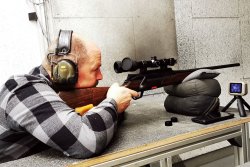
On the 100-meter course, the velocity next to the muzzle was recorded with a Garmin Xero C1 Pro, and the groupings were then measured after five shots. The best result was delivered by the Sax KJG-SR with a 21-mm group. The GECO Express ranked in the middle with 29 mm, the Brenneke TAG with 31 mm, the RWS Evo Green produced 33 mm and the Cutting Edge from Sellier & Bellot 34 mm. The Sax KDG-J and the GECO Star delivered the strike results from the test rifle. This means that several hit results are in the range of just over one minute of angle.
Beretta tests the rifles at the factory for an accuracy of less than 1 MOA, but for three shots, not five. However, the Sax KJG-SR was easily able to undercut this value from the test rifle, and that with five instead of three shots.
Beretta BRX1 Wood technical specifications
Model: | Beretta BRX1 Wood |
Caliber: | .308 Winchester |
Capacity: | 5 + 1 cartridges |
Overall Length: | 1,035 mm |
Barrel Length: | 510 mm |
Twist Rate: | 1:11“ |
Trigger Pull Weight: | Adjustable between 950 and 1,500 g |
Weight: | 3,250 g |
Left/Right Version: | Adjustable right and left version |
Features: can be used by both right- and left-handed shooters, adjustable LOP by means of spacers, adjustable trigger weight, three-position safety, rotating bolt with eight lugs. | |
Conclusion: Beretta BRX1 with the wooden set
Well, someone has put a lot of thought and effort into what customers value and it has turned out really well – that was my first thought when testing the Beretta BRX1. On the outside it is a classic straight-pull rifle, on the inside a combination of modern and practical components. If you want a driven hunt rifle that is really well thought out and full of useful extras, the BRX1 is definitely a good choice. You certainly can't go wrong with a purchase.
Further information on the Beretta BRX1 family of firearms can be found on the Beretta website.
Here you will find information on the Steiner riflescopes used.



